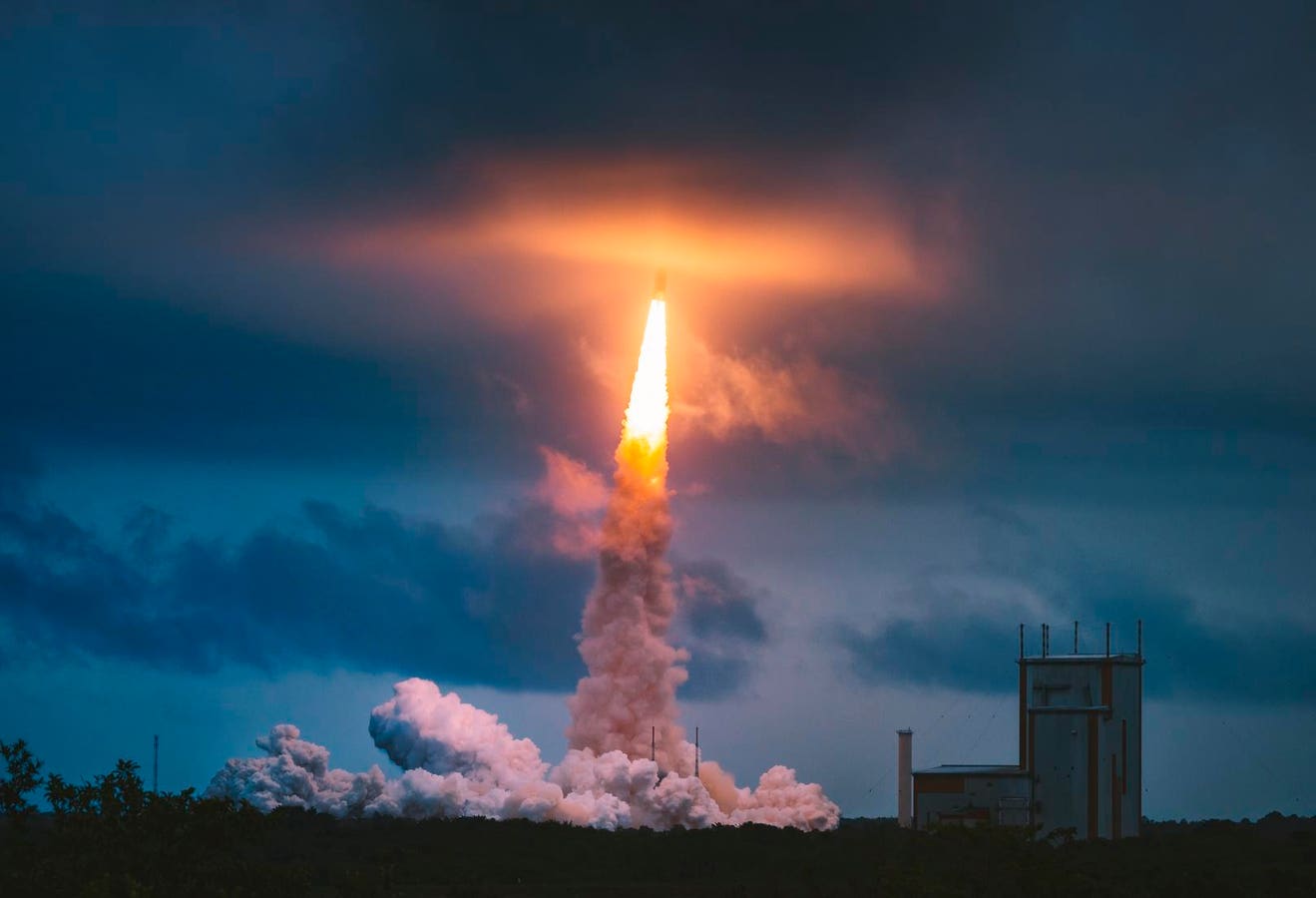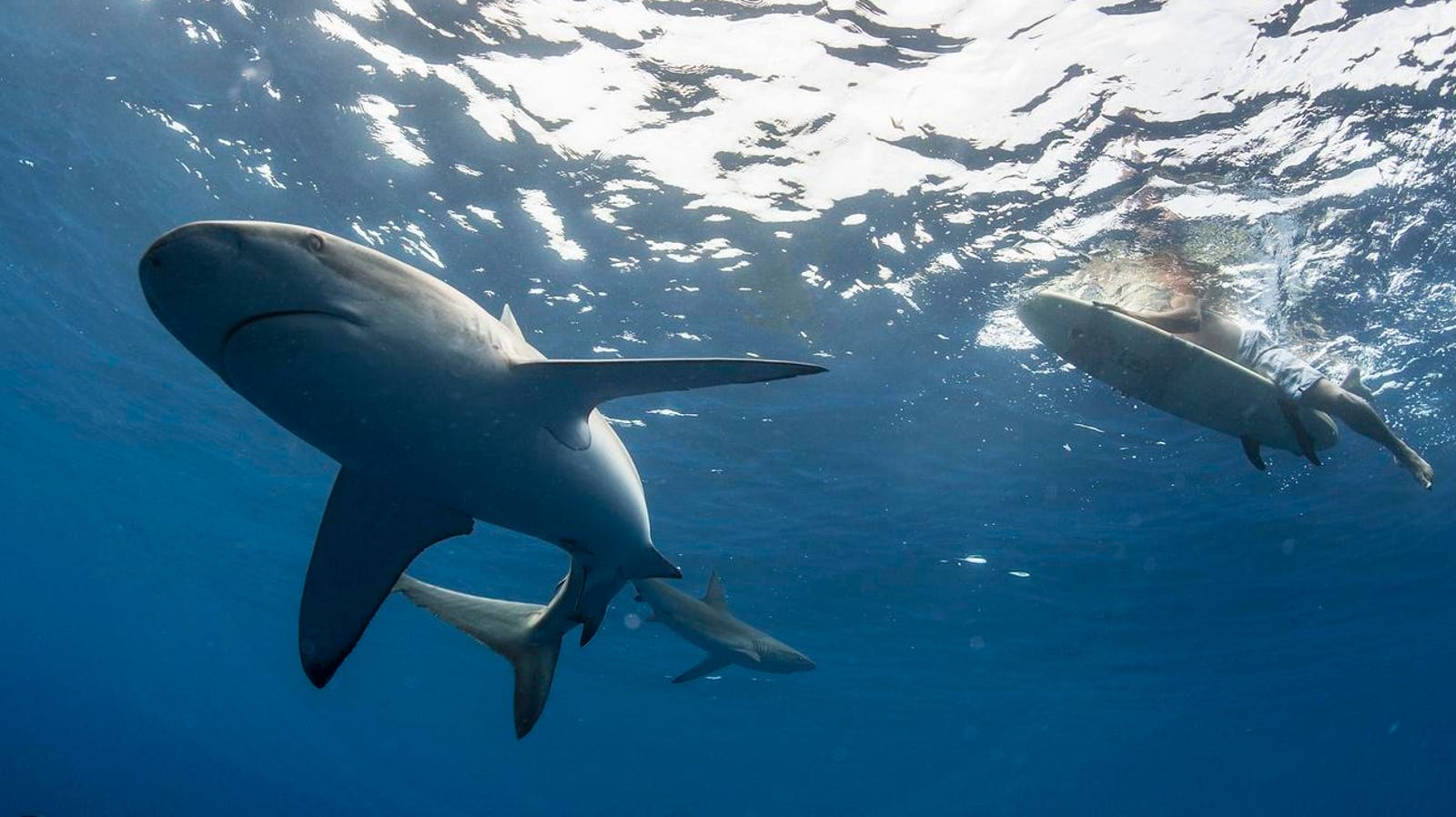In this week’s edition of The Prototype, we look at potential first signs of life on another world, the impact of NASA cuts, an FDA greenlight for BCIs, talking to dolphins with AI and more. You can sign up to get The Prototype in your inbox here.
The launch of the James Webb Space Telescope in 2021.
Getty Images
Using the James Webb Space Telescope, scientists have detected what may be signs of life on a planet 124 light-years away: chemical signatures of dimethyl sulfide and dimethyl disulfide, which on Earth are only produced by microbes like plankton in the ocean.
The planet in question, imaginatively named K2-18b, is about two and a half times the size of Earth and orbits a red dwarf star. It’s at the right distance from that star to potentially have temperatures that could support Earth-like life. Which is promising, but many more observations need to be made to learn more about the planet and confirm whether life exists there. Dimethyl sulfide has also been detected on a comet, so finding it isn’t a slam dunk sign of life. The best explanation, though, is that K2-18b is an ocean planet “teeming with life,” according to the paper reporting the findings.
The news of what could be a historic discovery comes just a few days after news that the Trump Administration’s Office of Management and Budget plans to cut NASA’s science budget by nearly 50%. That includes a 20% cut to the operations of the James Webb space telescope and plans to shelve the Nancy Grace Roman Space Telescope, for which 87% of its $4.3 billion budget is already spent and is slated for a 2026 launch, as well as other projects like the Mars Sample Return Mission.
In Congress, Rep. Don Bacon, R-Neb., and Judy Chu, D-Calif., co-chairs of the bipartisan Planetary Science Caucus, decried the cuts, writing that they “would demolish our space economy and workforce, threaten our national security and defense capabilities, and ultimately surrender the United States’ leadership in space, science and technological innovation to our adversaries.” On his social media platform X, Elon Musk–whose company SpaceX has a $225 million contract to launch the Roman space telescope–called the proposal “troubling.”
Casey Dreier, policy chief on the non-profit Planetary Society, told me that this proposal is a big change from Trump’s first administration–where NASA’s science budget actually reached its peak–and that the cuts would probably hit the commercial space industry particularly hard, leading to fewer opportunities because the agency is a major customer for the industry. Additionally, he emphasized that the fundamental science NASA does–collecting data about stars and planets across the universe–isn’t something the industry could step into. “There’s no market in searching for life,” he said.
Stay tuned.
FDA Clears Neuralink Rival Precision Neuro’s Brain Implant
The layer 7 Cortical Interface is placed on top of the brain, instead of being implanted.
©2023 Kevin Brown Photographer LLC
Yesterday, the FDA cleared the Layer 7 Cortical Interface, a brain-computer device developed by New York City-based Precision Neuro, for commercial use. Under the terms of the clearance, the implant can be used in patients for up to 30 days.
Before beginning brain surgery, doctors often use electrodes placed on a patient’s head, which detect signals used to build a map of the patient’s brain. This provides a guide to ensure best possible outcomes for the surgery.
Precision’s interface offers a significant improvement to this process, cofounder and CEO Michael Mager told me. Unlike competitors like Neuralink, which implants a chip into the brain tissue, the company’s thin, flat device is instead placed under the skull directly on top of the brain. This, Mager said, enables much more data about brain activity to be gathered. He likens the current electrode technology to “a very low pixel camera, where you see dots, as opposed to a really high resolution camera.”
So far, the device has been implanted in 37 patients for a few hours at a time. The FDA clearance will now enable Precision, which manufactures its own devices at its factory in Texas, to scale up with plans to go to market in 2026. Particularly exciting to Mager is the regulatory greenlight to leave the implants in patients for weeks, which will enable an “exponential increase in data” that can help doctors and researchers learn more about different neurological conditions.
In the long-term, Mager said that Precision, which has $155 million in venture backing, is also developing ways to use its implants to give paralyzed patients the ability to connect to computers and other devices, giving them more independence. ‘We think it’s going to be life-changing for a large number of people,” he said.
DISCOVERY OF THE WEEK: STEM CELLS IMPROVE PARKINSON’S SYMPTOMS
Two clinical studies published this week show a potential new way to treat Parkinson’s disease: by directly injecting dopamine-generating neurons into the brain. In Parkinson’s patients, these neurons are slowly destroyed as the disease progresses, which eventually affects their mobility and causes the disease’s tell-tale tremors. The trials, one of which involved 12 patients in the U.S. & Canada and the other involving seven patients in Japan, used stem cells to create the neurons. Both studies found that patient’s symptoms improved without any significant safety issues. Larger studies are expected to follow.
FINAL FRONTIER: USING AI TO FIND PLANETS
A new AI model might hold promise in finding other Earth-like planets. Developed by a group of European scientists, the model was tested by applying it to data about other solar systems that may include potential Earth-like planets. Applied to other data, it identified 44 new solar systems that might hold Earth-like planets and further studies confirmed those planets were potentially present. The benefit of the new model is that it will help astronomers hunting for Earth-like planets narrow their focus and aim telescopes at likely targets.
WHAT ELSE I WROTE THIS WEEK
In my other newsletter, InnovationRx, Amy Feldman and I wrote about the impact of Medicaid cuts on maternal healthcare, a $400 million obesity bet, a study of bias in clinical AI, Amgen’s AI hire from Nike, and more.
SCIENCE AND TECH TIDBITS
My colleague Richard Nieva wrote about Neo, which aims to become the Harvard of startup incubators. Alumni of its programs include AI coding startup Anysphere, popular X alternative BlueSky and drone startup Flyby Robotics.
An LSD analogue that has the potential to treat schizophrenia without causing hallucinations has been developed by researchers at the University of California-Davis.
Ancient Italians designed roofs for maximum energy efficiency, according to a physics analysis of the airflow around buildings.
Google released DolphinGemma, a large language model that’s been trained on thousands of hours of dolphin recordings aimed at helping scientists understand how they communicate–and perhaps one day even talk back.
Alternative fuel company Airco successfully demonstrated the use of its fuels, which are created from CO2 in the atmosphere, in military vehicles on land, sea and air.
PRO SCIENCE TIP: KEEP USING TECH AS YOU GET OLDER
We often half-jokingly talk about how using smartphones is “rotting our brains” but it turns out the opposite may well be true. A new study published this week found older adults who are engaged with digital technologies have reduced rates of mental decline compared to those who don’t. These findings were based on an analysis over 130 studies which looked at over 400,000 different subjects. This appears to be the case for a variety of reasons: first, the everchanging nature of tech requires constant adaptation, which helps keep the brain nimble. Second, digital tools expand opportunities for communication and engagement, which are also associated with less cognitive decline. And finally tools like calendar reminders and to-do lists help support independence as people get older. So get your mom and dad that new phone for their birthday this year; it’s good for them.
WHAT’S ENTERTAINING ME THIS WEEK
This week I rewatched the 1989 movie Romero, a biopic of Oscar Romero, who was selected to be archbishop of San Salvador because he was thought to have a moderate and compromising nature. But over time, he began to preach against the injustice and atrocities of the authoritarian government of his country El Salvador. In 1980, he was killed for it. Raul Julia gives an amazing performance in the lead role. I can’t recommend it enough–especially given the controversies involving El Salvador making headlines today.
MORE FROM FORBES






